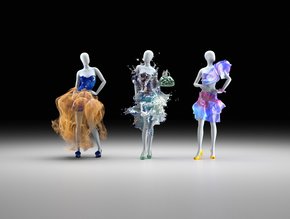The fantasy of AI: difference between pop culture vs reality

For decades, pop culture and science fiction have illustrated the possibilities of artificial intelligence (AI). However, these perceptions haven’t always been accurate or encouraged positive development. Popular films such as The Matrix, Her, and Ex Machina might have cast a spotlight on the possibilities of AI in the future, but in the long term they have misshaped public perceptions of what AI actually is and how it already surrounds them.
O’Reilly’s recent survey which gives AI-creators insight into how consumers use and perceive technology depicts just this—a misunderstanding of what AI truly is and how it can help us.
The rise of AI in popular culture
When AI is brought up in casual conversation, what do you think comes to mind? Robots? The Terminator? WALL-E? R2D2? The chances are that people think AI is rooted in popular culture, an idea that has been perpetuated by the entertainment industry for over 50 years.
Most of us have dreamt about self-driving cars and robots that helped us carry out our daily tasks with ease. However, what was once a dream, has now become a reality. Self-driving cars are now real with Elon Musk, Tesla CEO announcing that the electric car maker will now have fully self-driving vehicles on the road by the end of 2020 and robot waiters are now becoming a phenomenon, with the potential of replacing the mundane, repetitive work done by individuals in the service industry.
Television and the big screen have played a large role in introducing AI into our homes, but how does this depiction impact how we develop and implement the technology?
For those working to incorporate AI technology into products and develop new ways to use it, robots and cars are not an everyday focus. The areas of advancement instead look at AI that learns from our actions to more efficiently help us in our day-to-day lives, answering questions for us and completing tasks through speech recognition and language processing at work and at home.
But how do we harness the excitement around the fantasy of AI to increase everyday adoption?
Much closer to home
One of the best ways to merge the fantasy and reality of AI is to truly understand what consumers think and what they believe is the potential of the technology.
In our survey, when asked what the most useful form of AI is, more than half (58%) of consumers regarded smart home technology as the most vital. This was closely followed by home security systems (54%), travel recommendations (52%), and virtual assistants (50%). This provides insight into how AI creators can expand their ideas of where AI can be useful to encourage consumers to adopt it in their personal lives.
While AI is already present in our homes—thanks to smart speakers from Amazon, Apple and Google—more and more consumer groups appreciate the success of smart home technology and are willing to adopt it in the future.
The future of AI
Survey respondents were also asked what application of AI excited them the most in the future. Fraud detection (28%) topped the list as the most exciting area for AI development. It was the most commonly cited use by men. This is despite only 11% of consumers closely associating fraud detection with AI.
While self-driving cars also generated great excitement among 24% of respondents, interestingly, it was the most popular choice among women, younger consumers, and those working in the AI industry by a significant margin (50%). With fraud detection coming out on top, we can start to see the shift from fantasy to practicality, a trend that AI-creators should leverage to reinforce the pragmatic use of AI within the workforce.
It is up to a wide range of individuals including developers, marketers, product managers and sales to ensure that AI is used and understood correctly. To encourage adoption, developers should focus their efforts on leveraging AI to make consumers’ everyday lives easier, augmenting existing experiences to make them more seamless and exciting. While there might be an indifference with fantasy and reality, more and more consumer groups appreciate the success of smart home technology and are watching the development of autonomous vehicles very closely. It’s up to these sectors to capitalise on the hype, but the results are also a call for the creators of work-focused AI to make solutions that capture the imagination and generate excitement. Not only this, but developers need to have in mind consumer needs relatively clearly even at the start of the process when an idea might be more amorphous.
Stepping into the present moment
While AI notions have been driven by popular culture and science fiction throughout our lives, people still don’t understand AI and that it is already everywhere. AI is not solely robots and virtual assistants; it is in our homes and at work even when we least expect it. AI creators must learn from consumer attitudes and their fascination with science fiction to make technology appealing to a wider audience, capitalising on fantasy for long term benefits.
By Rachel Roumeliotis, Vice President of Data and AI at O’Reilly






